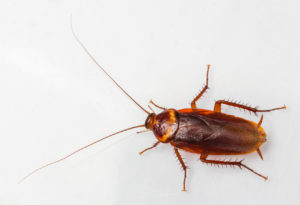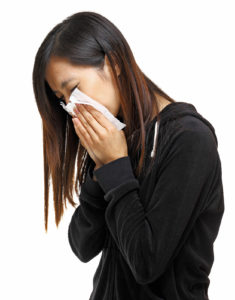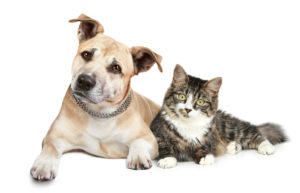Black & Kletz Allergy provides expert allergy and clinical immunology services from an allergy doctor Vienna VA residents have long trusted as the board certified allergists have more than 50 years of experience.
Our allergy doctor Vienna VA inhabitants trust is a specially trained physician with expertise in the treatment of allergic and immunological diseases. After successfully completing internship and residency training in either pediatrics or internal medicine, our allergy doctor Vienna VA residents desire underwent further training for 2 to 3 years in an accredited allergy and immunology fellowship training program. During training, our allergy doctor Vienna VA residents trust learned to diagnose and treat various disorders affecting the immune system.
The disorders affecting the immune system may include allergic sensitivity to environmental allergens (e.g., dust mites, molds, pollens, pets, cockroaches), foods, medications, insect sting venoms, etc. Environmental allergies usually affect the respiratory system causing conditions such as allergic rhinitis (hay fever), allergic conjunctivitis, and asthma.
The most common allergens affecting the respiratory system are aeroallergens that are inhaled such as the aforementioned dust mites and their droppings, mold spores, pollens (e.g., trees, grasses, weeds), animal dander, and cockroaches. The allergy doctor Vienna VA inhabitants respect is trained in identifying the specific allergens that cause allergic rhinitis, allergic conjunctivitis, and asthma. Our allergist is able to identify the specific allergies by performing diagnostic allergy tests such as skin tests and/or blood tests. The allergy doctor Vienna VA residents trust then provides detailed information to the patient about the various ways of avoiding exposure to these specific substances by way of environmental controls. The symptoms of respiratory allergies may include nasal congestion, runny nose, post-nasal drip, itchy nose, itchy throat, itchy eyes, watery eyes, redness of the eyes, puffy eyes, sneezing, facial pressure, headaches, sinus pain, sinus congestion, throat irritation, coughing, wheezing, chest tightness and/or shortness of breath. The allergy doctor Vienna VA inhabitants have confidence in will prescribe medications in order to relieve these symptoms. Our allergist will also explain the medications to the patient as well as their potential side effects. In addition, our allergy doctor Vienna VA residents respect may offer a desensitization treatment (i.e., allergy shots, allergy injections, allergy immunotherapy, allergy hyposensitization) protocol, which will build up tolerance to these allergens and help prevent future allergy and/or asthma symptoms. This process is especially useful when the environmental controls are not feasible and/or when medications are not helping enough or causing undesirable side effects. The allergy doctor Vienna VA inhabitants admire will give detailed information to the patient about allergy shots including possible benefits and risks from the procedure. It should be noted that allergy shots are efficacious in about 80-85% of patients receiving them. Allergy shots have also been given to allergy sufferers for more than 100 years and are generally taken for 3-5 years.
Food allergens may cause generalized itching (i.e., pruritus), hives (i.e., urticarial), swelling (i.e., angioedema) and rarely life-threatening allergic reactions (i.e., anaphylaxis). The most common foods that cause allergic reactions in children and adults include peanuts, tree nuts, wheat, milk, eggs, soy, fish, and shellfish. The allergy doctor Vienna VA residents trust will perform diagnostic tests in order to identify the specific food allergens that a person is sensitized to and the allergist will then educate the patient in methods of avoidance. Our allergy doctor Vienna VA inhabitants respect will also prescribe an epinephrine self-injectable device such as an EpiPen, Auvi-Q, or Adrenaclick for use by the patient or parent in case of inadvertent exposure resulting in a systemic reaction.
Insect venom allergies affect thousands of patients annually in the U.S. They can cause life-threatening allergic reactions after stings by honey bee, yellow jacket, yellow faced hornets, white faced hornets, wasps, and fire ants. Our Allergy doctor Vienna VA residents trust performs allergy skin tests in order to detect one’s sensitivity to insect venoms. Our allergist may offer desensitization injections (i.e., allergy shots) to individuals with positive skin tests along with a convincing history of a systemic reaction in order to reduce the risks of a life-threatening reaction after such a sting.
The board certified allergy doctors at Black & Kletz Allergy have been treating patients for allergies, asthma, and immunologic conditions for over many years and have offices in Washington, DC, McLean, VA (Tysons Corner, VA), and Manassas, VA. We have been serving the Washington, DC, Northern Virginia, and Maryland metropolitan area for over 5 decades and treat both adult and pediatric patients. All 3 offices at Black & Kletz Allergy offer on-site parking and the Washington, DC and McLean, VA offices are Metro accessible. There is a free shuttle that runs between our McLean, VA office and the Spring Hill metro station on the silver line. Please call one of our offices to schedule an appointment. You may also click Request an Appointment and we will reply within 24 hours by the next business day. At Black & Kletz Allergy, we strive to improve the quality of life in allergic individuals in a professional and compassionate setting.



 The vexing question about what to do about the alarming increase in peanut and other
The vexing question about what to do about the alarming increase in peanut and other  Spring is rapidly approaching in the Washington, DC metropolitan area and that means many people will be suffering from
Spring is rapidly approaching in the Washington, DC metropolitan area and that means many people will be suffering from  With the recent resurgence of vaccine-preventable diseases like measles in the United States, in addition to the ongoing active influenza (flu) season, the issue of food allergies and vaccinations has become a hot topic.
With the recent resurgence of vaccine-preventable diseases like measles in the United States, in addition to the ongoing active influenza (flu) season, the issue of food allergies and vaccinations has become a hot topic. In the winter, everyone seems to either have had a “
In the winter, everyone seems to either have had a “ It is an awful thought, but many people are allergic to cockroaches. No one likes to think that they are within miles of a cockroach, however, cockroach allergy is one of the most common indoor pests. They can cause many problems for those allergic to them including
It is an awful thought, but many people are allergic to cockroaches. No one likes to think that they are within miles of a cockroach, however, cockroach allergy is one of the most common indoor pests. They can cause many problems for those allergic to them including  Mammalian Meat Allergy is a delayed allergic reaction triggered by eating the meat of some mammals. The condition was discovered by researchers at the University of Virginia only a few years ago. Their findings of this new allergy were published in 2009. The allergy initially was confined to the southeastern part of the U.S. with a majority of the cases in Virginia. Subsequently, the condition has become more widespread. Mammalian Meat Allergy is initiated by a bite from a Lone Star Tick (Amblyomma americanum), named because of its distinctive small white mark on its back. Many people deny a tick bite and instead say there were bitten by chiggers (a type of mite), even though chiggers do not cause the allergy. For this reason, it is prudent that an allergist ask the patient if they have ever been bitten by a tick or a chigger. In susceptible individuals, the bite sets off a chain reaction which results in the formation of an IgE antibody (the “allergy” antibody) that attaches to a carbohydrate (sugar) present in the meat of only mammals called galactose-alpha-1,3-galactose (also known as “alpha-gal”). This is present in mammalian meat such as beef (cow), pork (pig), lamb (sheep), venison (deer), rabbit, goat, bison, whale, etc. It is also important to point out that for people who travel to exotic locations, one must be aware that there are other mammals that are eaten which contain alpha-gal. Some of these mammals include horse, dog, cat, squirrel, guinea pig, kangaroo, and whale, to name a few. Since fish, shellfish, and poultry (i.e., chicken, turkey, duck, quail) are not mammals; they do not have alpha-gal.
Mammalian Meat Allergy is a delayed allergic reaction triggered by eating the meat of some mammals. The condition was discovered by researchers at the University of Virginia only a few years ago. Their findings of this new allergy were published in 2009. The allergy initially was confined to the southeastern part of the U.S. with a majority of the cases in Virginia. Subsequently, the condition has become more widespread. Mammalian Meat Allergy is initiated by a bite from a Lone Star Tick (Amblyomma americanum), named because of its distinctive small white mark on its back. Many people deny a tick bite and instead say there were bitten by chiggers (a type of mite), even though chiggers do not cause the allergy. For this reason, it is prudent that an allergist ask the patient if they have ever been bitten by a tick or a chigger. In susceptible individuals, the bite sets off a chain reaction which results in the formation of an IgE antibody (the “allergy” antibody) that attaches to a carbohydrate (sugar) present in the meat of only mammals called galactose-alpha-1,3-galactose (also known as “alpha-gal”). This is present in mammalian meat such as beef (cow), pork (pig), lamb (sheep), venison (deer), rabbit, goat, bison, whale, etc. It is also important to point out that for people who travel to exotic locations, one must be aware that there are other mammals that are eaten which contain alpha-gal. Some of these mammals include horse, dog, cat, squirrel, guinea pig, kangaroo, and whale, to name a few. Since fish, shellfish, and poultry (i.e., chicken, turkey, duck, quail) are not mammals; they do not have alpha-gal. The onset of
The onset of  With the onset of cold weather, some children and adults with a history of
With the onset of cold weather, some children and adults with a history of  As
As  The two most common pet allergies in the United States are cats (20% of the population) and dogs (10% of the population). Dogs, however, are the most common pet, followed by cats. There has been an upward trend in the U.S. in the number of household pets with almost 70% of households having at least one pet. Of course, besides dogs and cats, other common pets include birds, rodents (i.e., hamsters, guinea pigs, gerbils, chinchillas, mice, etc.) reptiles (i.e., lizards, snakes, turtles, etc.), rabbits, ferrets, horses, hermit crabs, spiders, and fish. Horses, unlike the other pets mentioned above, do not live in people’s homes, but can be quite allergenic.
The two most common pet allergies in the United States are cats (20% of the population) and dogs (10% of the population). Dogs, however, are the most common pet, followed by cats. There has been an upward trend in the U.S. in the number of household pets with almost 70% of households having at least one pet. Of course, besides dogs and cats, other common pets include birds, rodents (i.e., hamsters, guinea pigs, gerbils, chinchillas, mice, etc.) reptiles (i.e., lizards, snakes, turtles, etc.), rabbits, ferrets, horses, hermit crabs, spiders, and fish. Horses, unlike the other pets mentioned above, do not live in people’s homes, but can be quite allergenic.









